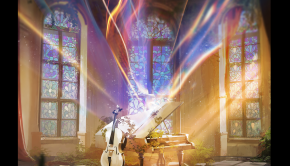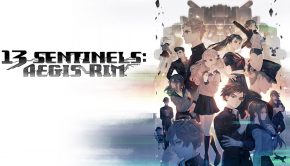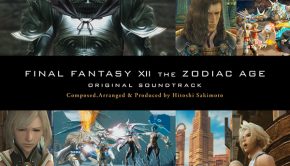Influence of Traditional Japanese Music
Have you ever tried to listen to traditional Japanese music? Just out of curiousity, perhaps, or maybe because you thought that there could be some connection to the video game music that comes from the same country? Well, as travellers to Japan from the west in the 19th century discovered, the traditional music of the country seems easily as foreign as the language and the art, if not more so. After all, the principles behind language are similar between countries, and if Japanese art seemed utterly alien to westerners in the 19th century, it seems much less so after the impressionists, who were influenced by the lack of perspective and vibrant color of woodblock prints. More than that, Hollywood movie scores and distributors of so-called “World Music” have brought many types of traditional music to the attention of the general public, and traditional instruments and styles are a staple of modern multiculturalism. In spite of all that, Japanese traditional styles continue to mystify many.
Most likely, the average video game music fan who has ventured to listen to Japanese traditional music finds it foreign. It might seem interesting or dull, beautiful in its transparency or dissonant in its idiom, but the prevailing impression will be one of utter distance from any music with which he or she is familiar. I would like to venture that, although Japanese traditional music has little direct influence on the majority of video game music, cultural tastes have led to a large degree of indirect influence.
The most obvious way in which to make music sound traditionally “Japanese” is to use traditional instruments, as in Okami or Muramasa. If one hears taiko and shamisen, shakuhachi and koto, it sounds Japanese. But it is Japanese music tempered by more westernized tastes. Quite a few tracks in Okami, such as “Shinshuu Fields,” are nothing more than standard western orchestral music with Japanese “flavoring.” Even when the instrumentation is entirely Japanese, such as in “Spirit Extermination,” the rhythms and harmonies tend towards the western. Likewise for the Muramasa soundtrack. Note the following comment by Hitoshi Sakimoto: “we came to know these “Japanese” sounds intimately and wanted to express them. So while trying as much as we could to preserve those beautiful sounds, we extended the traditional scales, didn’t worry too much about the accompaniment, and removed a number of problems by using digital methods.” That last part is important. One must remember that traditional Japanese music is not tuned to the western 12-tone equal temperment scale (which did not exist in its present form until the 19th century, anyway), and in fact makes heavy use of microtonal inflections (such as quarter tones) not normally permitted in western music.
The music in these games that sounds most traditionally Japanese is the slower, more reflective and meditative music. Traditional Japanese music is slow, of course, so it doesn’t suit action scenes. Here microtones and less strict rhythmic patterns are permitted. Okami even uses the sho, a mouth organ with a very distinctive sound, for some its harmonic backing. This is more than a change in instrumentation and effects, though, as the substance of the music itself is more distinctly Japanese. I believe that the essence of Japanese music is embodied much more in the measured pace of a ballad or lament than in the frantic rush of a battle.
Nobuo Uematsu, whose music sounds like anything and everything except traditional Japanese, once said that his Japanese heritage is probably most apparent in his melancholic pieces, and I feel personally that these are one area in which Japanese video game music excels. Perhaps Mitsuda’s reflective moments tend to be influenced by Celtic music, and Hamauzu’s by Impressionism, but the tendency in these and other composers towards emphasizing these over the more conspicuously dramatic is an influence of their culture.
Even Hitoshi Sakimoto, whose style is primarily inspired by Classical’s Late Romantic and early Modern periods, writes his slower pieces differently. “False Memories” from the Vagrant Story soundtrack, for example, opens with a rythmic interplay that recalls portions of Stravinsky’s Rite of Spring, if it were to continue longer, before dissolving into a celesta line like those in The Firebird. But then strings, harp, and clarinets come in all at once on an ambiguous chord loaded with added tones. Is this impressionist? A Late Romantic pastoral moment? The flute may sound like a throwback to Debussy’s Prelude to the Afternoon of a Faun, but the part is unusual. Instead of luxuriously resting upon the harmonic bed, it wanders around. Its melody is more like a series of fragments. The harmony also sounds more like the clusters produced by a Sho than triads. But here is where Sakimoto’s writing sounds most truly his. The section that follows reminds us again of Stravinsky with its rhythmic ostinati, but the real nucleus of the track lies in that peaceful moment in its center.
There is one other way in which Japanese musical culture influences video game music. Many video game music fans have noted that the style of singing found in Japanese pop seems different. Ignoring the more high pitched “cute” vocals that some find as appealing as nails on a chalkboard, one still notices a distinct gap between the western style and the Japanese one. Some perceive it as being out of tune, others as sounding weaker or perhaps (if one enjoys it) more serene. There are a few important distinctions. First, western Pop music is nearly always double-tracked; the vocal is placed over itself, slightly off-set, in order to give the illusion of a more powerful sound, and to make it stand out more in the mix. Japanese pop is sometimes double-tracked, sometimes not.
The most important distinguishing characteristic, however, is the treatment of the melody line itself. In Japanese pop music, the top notes are often hit flat. Phrases often feature lines that have a top note, and if this note is used as a pivot, it will be approached rather than hit exactly, at about a quarter tone below the note. Compare the vocal performances by Joanne Hogg on the Xenogears soundtrack to those by Tetsuko Honma on CREID, and the difference is immediately apparent. This stylistic trait is so pervasive that noting the Japanese language examples that do not have it, such as Unlimited SaGa‘s “Soaring Wings,” is more useful than enumerating those that do. It is not a matter of ability or lack thereof, it is a matter of style.
What does all of this amount to? For one thing, it means that as foreign as Japanese traditional music may sound on the surface, most VGM fans have been exposed to some of its key elements. It also means that many Japanese VGM composers have, subconsciously or consciously, incorporated those elements into their music. I have been attracted to Japanese video game music for many years now, and in the last few years, I have found an interest in Japanese traditional music. I have come to believe that these two areas are not as far separated from each other as some might believe.
Posted on March 1, 2012 by Ben Schweitzer. Last modified on February 27, 2014.















Nice article. I appreciate that you’ve gone beyond just talking about instrumentation. This is a subject with a whole lot to be written about!